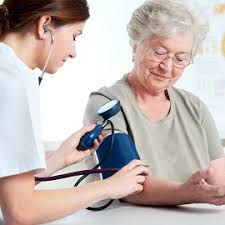Neurological ailments are difficult to treat if they are not understood and differentiated once. So, it is important to carefully examine the level of neurological capacity of the patient before operating on him. The neurological check is usually done on patients who have gone through head injuries or cervical injuries. This will also give an insight into whether the patient’s neurological condition has improved or not. The nurses play a vital role in the neuro check because the doctors are busy in operation theatres and looking for extremely important patients like pregnant ladies, older adults, etc. So here are some ways in which nurses can do the best neuro check: –
Pupil’s test
This test checks for the responsiveness of the eye. In this test, light is thrown on the pupils to check whether they are responding to it or not. The response can be understood by the level of enlargement in the size of the pupil. Also, a preliminary test checks for the size of the pupil as well, which looks for the equality of both pupils.
Facial Symmetry Test
Since there are multiple nerves and muscles in the face, exceeding thirty in number. Hence, the facial symmetry test gives a good insight into the patient’s neurological condition. In this test, the patient is said to smile (if he is in the condition to smile), and it is then checked whether there is any distortion or disfigurement in the smile. Sometimes one side of the face hangs below the other. This is a potential sign of brain hemorrhage. The facial symmetry test also considers the position of the eyebrows.
Alert and Oriented test
A normal human being can react to sudden and immediate stimulations like pinching, heat, etc. But sometimes, due to neurological problems, the person cannot feel so. That’s why an alert and oriented test is performed to deduce this fact. It enables the medical professionals to judge the true condition of the patient.
Tongue Midline test
Sometimes the outer facial symmetry test doesn’t give significant results. In those cases, the tongue Midline test is also performed, where the tongue is turned to side, and the position of the inner mouth is examined. Sometimes a clear deviation in the inner muscles of the mouth is seen.
Speech Clarity and Proficiency test

It has been seen many times in medical history that sometimes the patient feels no neurological ailments or problems but still he is unable to make clear and loud speech. This is also a sign of irregular functionality of muscles. That’s why the speech clarity and proficiency test is conducted. In this test, a standard paragraph of language is given to the patients to speak, and based on the syllables and vowels sound, the clarity and proficiency are tested. Impediments and slurs are also detected at this stage.
Light and Heavy test
This test is of fundamental importance. To sense the outer stimulus is the basic feature of the human body. But sometimes, even this basic ability is hurt due to neurological problems. That’s why light and heavy test is conducted on the patients. First, a very light object is given to the patient, like a feather or cotton, and he is asked to feel it and sense its weight. Then a little heavy object is put in the patient’s hand, and he is asked to tell the weight nearly to the true value. The pressure test is also conducted to check the sensitivity, strength, and level of numbness and lack of response.
Grasp Test
Every patient suffering from neurological ailments has to undergo this test necessarily. The grasp test enables the doctors to grasp the level of strength and functionality of the patient’s muscles. The patient is asked to squeeze fingers as tight as possible, and the nurses examine the level of strength and note it down for further examination.
Memory Test
This is also one of the most fundamental tests in checking for neurological ailments. The patient is asked several questions to test their memory. Many patients find this question useless, but its importance can’t be neglected. These types of questions are asked:
- What is your name?
- From where do you belong?
- What is your age?
- Tell the number of family members?
- Where do you work?
- What are your likes and dislikes? And many more questions with a level of increasing difficulty to test for proficiency.
Level of Consciousness test

This is one of the vital and most significant tests of all. This level of consciousness test enables the doctors and surgeons to understand the patient’s current mental and physical position. The level of consciousness test is very easy to perform and doesn’t require any high-tech Instruments. It is done in five ways depending upon the condition of the patient.
- Full Consciousness
When the patient is in a fully conscious state. They give the response to the question very quickly and without no apprehension. This full consciousness level is the requisite state to test for all the other tests accurately and precisely.
- Lethargy
In this condition, the patient is not conscious but understands what’s happening around him. He also responds to the questions but sleepily and tiredly. And he is given constant stimulus to make him conscious.
- Obtundation
Obtundation is the state of consciousness in which the patient is conscious for a short time only, and if he is not given a stimulus from time to time, he may fall asleep. Also, he can answer the questions verbally only, and that too in two to three words only. He also shows no responsiveness to immediate stimulations.
- Stupor
Stupor is near to coma state in which the patient is given constant, continuous, and vigorous stimulations to let him in a conscious state and get a response. The stimulation is sometimes very painful, and the patient moans as well. But the tests can’t be performed on him productively because he cannot answer anyone.
- Coma
This is the last and minimum state of consciousness. No reaction will be found in this state, however hard or painful stimulation you give to the patient. In this stage, the patient is sleeping, and no responsibility can be recorded.
Hence these were the best ways to check for neurological ailments. One thing to notice is that these tests are performed on the patients according to their mental and physical conditions, age, and considering other factors.
 Nursing Trends
Nursing Trends







